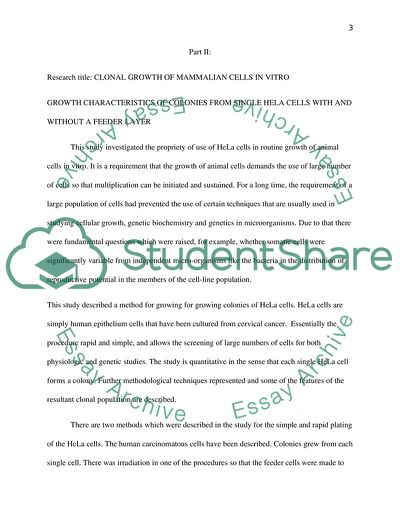Cite this document
(Immortal Life of Henrietta Lacks Book Report/Review Example | Topics and Well Written Essays - 1250 words, n.d.)
Immortal Life of Henrietta Lacks Book Report/Review Example | Topics and Well Written Essays - 1250 words. https://studentshare.org/biology/1782633-the-immortal-life-of-henrietta-lacks-rebecca-skloot-chapters-1-11
Immortal Life of Henrietta Lacks Book Report/Review Example | Topics and Well Written Essays - 1250 words. https://studentshare.org/biology/1782633-the-immortal-life-of-henrietta-lacks-rebecca-skloot-chapters-1-11
(Immortal Life of Henrietta Lacks Book Report/Review Example | Topics and Well Written Essays - 1250 Words)
Immortal Life of Henrietta Lacks Book Report/Review Example | Topics and Well Written Essays - 1250 Words. https://studentshare.org/biology/1782633-the-immortal-life-of-henrietta-lacks-rebecca-skloot-chapters-1-11.
Immortal Life of Henrietta Lacks Book Report/Review Example | Topics and Well Written Essays - 1250 Words. https://studentshare.org/biology/1782633-the-immortal-life-of-henrietta-lacks-rebecca-skloot-chapters-1-11.
“Immortal Life of Henrietta Lacks Book Report/Review Example | Topics and Well Written Essays - 1250 Words”. https://studentshare.org/biology/1782633-the-immortal-life-of-henrietta-lacks-rebecca-skloot-chapters-1-11.


